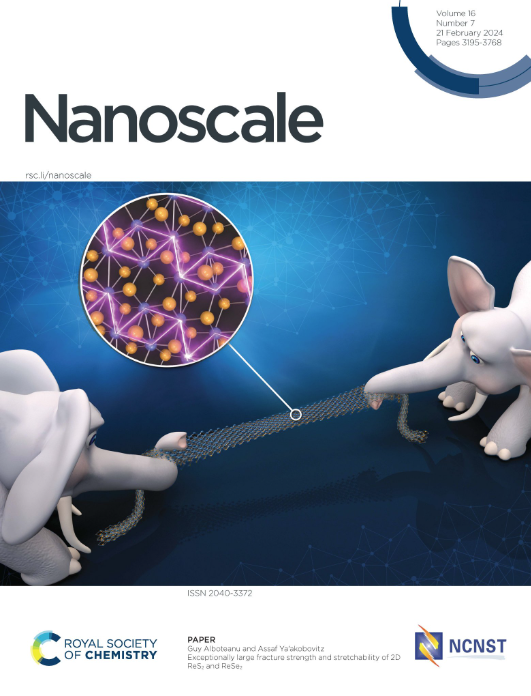抗菌肽共轭石墨烯涂层用于预防和治疗细菌感染
IF 5.1
3区 材料科学
Q1 CHEMISTRY, MULTIDISCIPLINARY
引用次数: 0
摘要
石墨烯是碳原子的二维六边形晶格,具有显著的物理化学性质。与经典的化学剥离相比,化学气相沉积(CVD)技术能够生产连续透明石墨烯。生物医学设备(如隐形眼镜)上的CVD石墨烯涂层具有多种优点,如屏蔽电磁波干扰和脱水保护。然而,它对细菌粘附的保护作用仍未被探索。在这项研究中,我们设计了一系列抗菌肽(AMP)修饰的CVD石墨烯涂层在聚二甲基硅氧烷(PDMS)上,这是一种生物相容性CLs材料。在CVD石墨烯涂层上成功地共轭了amp,对透光率的影响可以忽略不计。所得涂层的接触角小于50°,蛋白质沉积小于9.4µg cm-2,表明其透明度、润湿性和蛋白质沉积适合生物医学设备。石墨烯表面的amp偶联可以防止铜绿假单胞菌(P. aeruginosa)形成生物膜,这可以通过降低菌落计数和细菌代谢活性来证明。分别用离体猪皮和兔眼实验验证了涂层的抗菌活性和生物相容性。总的来说,这项研究强调了amp修饰CVD石墨烯涂层在减少细菌感染和防止生物膜形成方面的潜力。本文章由计算机程序翻译,如有差异,请以英文原文为准。
Antimicrobial Peptide-Conjugated Graphene Coatings for Prevention and Treatment of Bacterial Infections
Graphene, a two-dimensional hexagonal lattice of carbon atoms, displays remarkable physicochemical properties. In contrast to classical chemical exfoliation, chemical vapour deposition (CVD) technology has enabled the production of continuous transparent graphene. CVD graphene coatings on biomedical devices such as contact lenses (CLs) offer several advantages, such as shielding from electromagnetic wave interference and dehydration protection. However, its protective effect against bacteria adhesion remains unexplored. In this study, we designed a series of antimicrobial peptide (AMP)-modified CVD graphene coating on polydimethylsiloxane (PDMS), a biocompatible CLs material. AMPs were successfully conjugated on CVD graphene coating, with negligible impact on the light transmittance. The resultant coating displayed contact angles of less than 50° and protein deposition of less than 9.4 µg cm-2, indicating transparency, wettability, and protein deposition suitable for biomedical devices. AMPs conjugation on the graphene surface prevented biofilm formation by Pseudomonas aeruginosa (P. aeruginosa), as evidenced by lower colony counts and bacterial metabolic activity. The antimicrobial activity and biocompatibility of the coatings were further demonstrated using ex vivo porcine skins and in vivo rabbit eyes respectively. Overall, this study highlights the potential of AMP-modified CVD graphene coating to minimize bacterial infection and prevent biofilm formation.
求助全文
通过发布文献求助,成功后即可免费获取论文全文。
去求助
来源期刊

Nanoscale
CHEMISTRY, MULTIDISCIPLINARY-NANOSCIENCE & NANOTECHNOLOGY
CiteScore
12.10
自引率
3.00%
发文量
1628
审稿时长
1.6 months
期刊介绍:
Nanoscale is a high-impact international journal, publishing high-quality research across nanoscience and nanotechnology. Nanoscale publishes a full mix of research articles on experimental and theoretical work, including reviews, communications, and full papers.Highly interdisciplinary, this journal appeals to scientists, researchers and professionals interested in nanoscience and nanotechnology, quantum materials and quantum technology, including the areas of physics, chemistry, biology, medicine, materials, energy/environment, information technology, detection science, healthcare and drug discovery, and electronics.
 求助内容:
求助内容: 应助结果提醒方式:
应助结果提醒方式:


